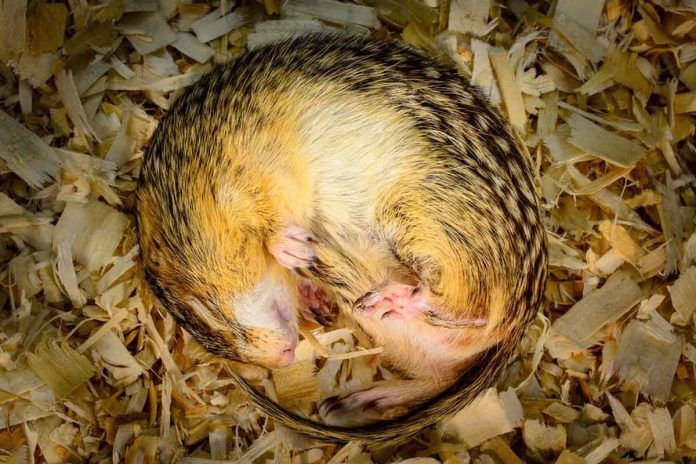Bears and ground squirrels hibernate in winter. They stop eating at that time. It lasts until spring by depending on the fat reserves they’ve stored up in their bodies. This prolonged fasting and inactivity can reduce the mass and function of muscle. But this does not happen to hibernators. The reason of this is a mystery to scientists.
Université de Montréal biologist has found something that can be implemented in future space travel. The study has been published in science. Scientists studied a variety called the 13-lined ground squirrel. This is common in North America. Scientists have confirmed a theory known as “urea nitrogen salvage”.
The theory states that hibernators harness a metabolic trick of their gut microbes to recycle the nitrogen present in urea. This is a waste compound which is excreted as urine. It is used to build new tissue proteins.
This theory can help astronauts minimize their own muscle-loss problems caused by microgravity-induced suppression of protein synthesis. This they now try to reduce by intensively exercising.
A way can be found to augment the astronauts’ muscle protein synthesis processes using urea nitrogen salvage. They can achieve better muscle health during long voyages into deep space in spacecraft too small for the usual exercise equipment.
A model hibernator
Scientists designed a series of techniques and experiments to investigate the major steps in the urea salvage process. They provided evidence for whether or not they occur in the 13-lined ground squirrel when it hibernates.
Scientists injected their test squirrels’ blood with “double-labelled” urea. This means the urea’s carbon atom was 13C instead of the usual 12C. Its nitrogen atoms were 15N instead of the usual 14N. These allowed scientists to track the urea-sourced carbon and nitrogen through the different steps of the urea nitrogen salvage process.
This process led from the initial transport of urea from the blood into the gut to the flow of substances. This is called metabolites. This contains urea nitrogen back into the animal. It leads to the eventual appearance of this urea nitrogen in tissue protein.
Scientists have done their experiment on squirrels with and without gut microbiomes at three times of the year. Summer, when they were active and not hibernating. Early winter, when they were one month into fasting and hibernation. Late winter, when they were four months into fasting and hibernation.
Clear evidence of nitrogen salvage
From their research, it was clear that evidence of urea nitrogen salvage by the squirrels with intact gut microbiomes.
Squirrels with depleted gut microbiomes displayed no evidence of urea nitrogen salvage at any step. This process was wholly dependent on the gut microbes’ ability to degrade urea. This is something the squirrels themselves cannot do.
Scientists also found out-
- The incorporation of urea nitrogen into the tissue protein of the squirrels was highest during late winter. This suggests that urea nitrogen salvage becomes more active as the hibernation season proceeds. This is not like most physiological processes during hibernation.
- There was evidence the microbes themselves were using the urea nitrogen to build their own new proteins. This is useful for them as they are under conditions of fasting hibernation. Both squirrel and its microbes benefit from urea nitrogen salvage. This makes the process a true symbiosis.
This means that the squirrels emerge from hibernation in the spring in good shape. It is important as the year’s only mating season occurs directly after they emerge from hibernation. Tissue function is therefore highly important for a successful mating season.
Starving masses and the elderly
This discovery can help beyond the implications for space travel and the health of astronauts. This can have more immediate impacts now right here on Earth. This can help in the starving masses of the underdeveloped world and in the elderly. Hundreds of millions of people globally experience muscle wasting as a consequence of various conditions. This affects over 805 million people globally. More prevalent in Canada is sarcopenia. This is an age-related decline in muscle mass stemming from anabolic insensitivity. This affects all humans and leads to 30 to 50% decline in skeletal muscle mass between the ages 40 and 80.

